Describing Different Parts of SCBA
Self Contained Breathing Apparatus, also known as SCBA, is a necessary protective gear that is worn by paramedics, firemen, and people working on ships and oil rigs.
As the name goes, the breathing apparatus has all the necessary equipment fitted into it that will allow the rescue professionals to carry out their work without any interruption and with utmost safety.
There are two major types of SCBA that are in use today – the Open Circuit SCBA and the Closed Circuit SCBA. The main difference between the two is that the former one is used for rescue operations that tend to be very long.
In this type of SCBA, the air is continuously re-processed or recycled so that the wearer of the SCBA gets a continuous supply of air. In the second variety, the oxygen is compressed to fit into air cylinders. These varieties of SCBA are used for shorter rescue operations.

The SCBA used on board ship is of the open circuit type mostly. In this, the exhaled air is discharged to the atmosphere while air from the cylinder is made available for inhalation. The equipment consists of:
- One or two cylinders containing air under pressure
- A harness to mount the cylinders on the back of the person
- A respiratory system which has a means to reduce the pressure of air from the cylinder and of supplying the wearer with air on demand
- A facemask is attached to a demand valve that maintains a positive pressure inside the mask at all times
Air Cylinders
The first and foremost presence in the air-breathing apparatus is that of Air Cylinders. In the open-circuit SCBA, the air cylinder is known as the re-breather which recycles the air (as mentioned above).
Air cylinders, on the other hand, are filled with oxygen in a compressed form that enables a rescue professional to go into areas that are filled with smoke and fire and free the trapped people successfully.
The air cylinders in the breathing apparatus need to be continuously checked after the rescue operation is carried out so that they do not end up being empty the next time a rescue operation needs to be carried out. There are also extra air cylinders that are provided for the people who have been trapped and rescued.
Protective Hood
The second-most important presence is that of a Protective Hood. Such hoods are designed in a way that they cover all the parts of the face, have an eye-covering (visor) that enables a person to see and also allow the required oxygen to pass continuously. They also have tubes attached to ensure that the air passes continuously.
Portable Transporting Bag
The Portable Transporting Bag is also important equipment of the breathing apparatus. It can be filled with air cylinders, hoods and any other protective equipment that would be necessary for the rescue operations. The bag is made up of a material that would be resistant to damage-causing factors and thus can be effectively used in any sort of emergency situation.
Portable Hauling Bag
The final breathing apparatus equipment is the Portable Hauling Bag. The main difference between this type of carrying bag and the one mentioned previously is that in this bag, the extra weight of the necessary items can be carried.
It is used for the purpose of getting the SCBA equipment from the headquarters of the rescue professionals to the place where the incident has actually occurred. It is only at the accident site that the equipment is transferred from this bigger bag to the Portable Transporting Bag.
A breathing apparatus has changed the entire rescue operation process, making it simpler and safer. More and more lives can be saved because of the portability factor of SCBA. It, therefore, becomes important and relevant to acknowledge and appreciate the worth of the SCBA in today’s times.
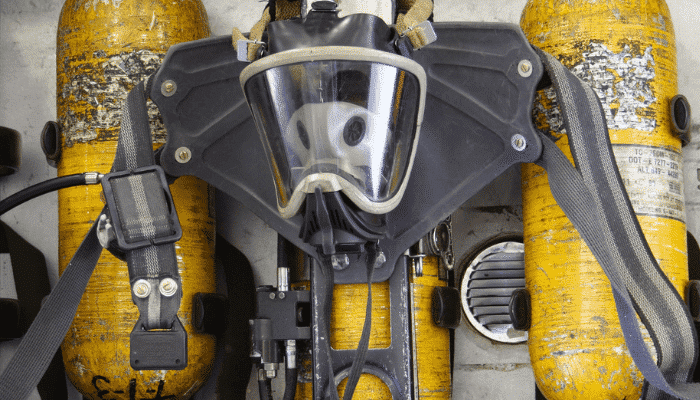
The arrangement of the whole apparatus is as follows:
- The cylinders contain about 1240 litres of compressed air at 200-atmosphere pressure. This gives the wearer around 31 minutes of air supply for full usage or about 21 minutes for working conditions (person breathes heavily during work hence there is more consumption of air and that is why the time is lesser)
- The reducing valve reduces the pressure by about 4 bars which are further reduced by the demand valve which is attached to the mask
- The demand valve is the one that supplies the air to the wearer when inhaling
- The exhalation valve releases the air from the facemask
- When the air left inside the apparatus will last about 10 minutes (40-45 bar pressure), a warning whistle is sounded continuously till the cylinder gets emptied. The start of this whistle is an indication for the wearer to move out of the space he’s in to fight fire or whatever purpose it is used for
- The face mask is of soft moulded nature rubber and five adjustable head straps and a nylon lanyard or neck strap. It has a foam-filled or air cushion seal and a full vision visor. For correct positioning of the mask, the straps should be tightened in the sequence where the first two upper straps then the middle pair and finally the lower pair are tightened. Care should be taken to not over tighten them causing discomfort to the wearer. The mask is made of rubber and plastic with a shatterproof visor. It has an exhalation port with a speech diaphragm and a nose guard
- The wearer should have a good, clear field of vision through the visor
- A gauge is provided, clipped or attached to the harness that carries the cylinder and it monitors the pressure within the cylinder, It is positioned to be visible to the wearer
- Spare cylinders must be provided for each set of breathing apparatus and a small air compressor provided onboard to refill the cylinders with compressed air
- In case that the facemask is dislodged in a toxic atmosphere, the wearer should hold his breath and position the mask correctly. Any inlet of such toxic air can be highly dangerous
Approximate consumption by a person is as follows:
| Degrees of work | Air consumption
(litres/minute) |
Duration of the cylinder in minutes (1200 litres capacity in minutes) | Duration of the cylinder in minutes (1800 litres capacity in minutes) |
| Resting | 8-12 | 150-100 | 225-150 |
| Light Work | 12-20 | 100-60 | 150-90 |
| Moderate Work | 20-40 | 60-30 | 90-45 |
| Heavy Work | 40-60 | 30-20 | 45-30 |
Nominal Working Duration = (Fully Charge Cylinder Capacity) – 10
40
We subtract 10 as 10 minutes is when the alarm starts ringing and it is a safe period that must be taken into account. So a 1200 litres cylinder will last for 1200/40 = 30 minutes minus the 10 = 20 minutes
Nervousness and excitement can cause an increased demand for oxygen and a proportionate increase in respiration rate.
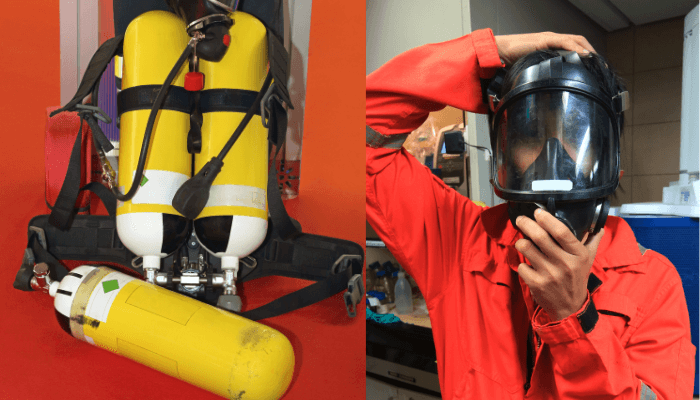
Assembly Instructions
Open the cylinder cradle by squeezing the two sides of the cradle lever and open the cylinder strap. Line up the cylinder valve with the reducer valve hand wheel and turn the handwheel counterclockwise until hand tight. Hook cylinder strap over the cylinder and pull down the operating lever onto the tension spring to be clipped to place.
To attach demand valve assembly to facemask- line up assembly with the red bypass valve knob upwards with the centreline of facemask and turn assembly clockwise through 90 degrees until it clicks into place
Donning Instructions
- Hang facemask from the neck by the neck strap
- Lift cylinder with the cylinder valve on top and backplate facing the wearer and raise it over the head and straighten hands to slide the shoulder straps on the shoulder. Fasten the waist belt and tighten shoulder straps
- Slide arms through shoulder straps and place back plate on the back with cylinder valve down, then tighten shoulder straps and fasten the waist belt
- Open cylinder valve by turning handwheel slowly counterclockwise
- Check the pressure on the gauge
- Open all facemask straps fully. Hold breath and place chin into the facemask and pull head harness and straps over the head
- Ensure mask is correctly placed on face with the nose guard on the nose and then tighten upper straps first and then lower ones. Both side straps must be tightened together
- Start to breathe deeply which will actuate positive pressure and then breathe slowly
Pre Use Checks
- Close the cylinder valve
- Breathe normally to vent system
- During venting observe gauge- whistle alarm should sound at a preset pressure of 55 bar +/- 5 bar
- When the gauge indicates zero, hold breath. Facepiece should hold onto face indicating positive seal
- Open cylinder valve slowly, but fully to pressurize the system
- Inhale and hold breath. There should be no audible leak
- Continue breathing. Expired air should easily flow out of the exhalation valve
- Press centre of rubber cover on-demand valve checking supplementary supply
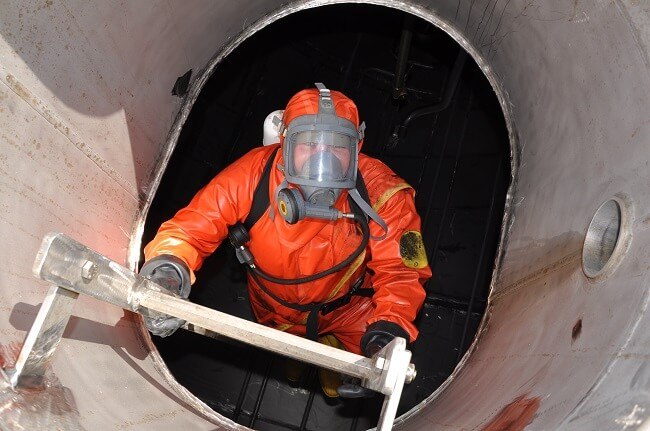
During Use
- Cylinder pressure to not be less than 80% full
- Keep checking the gauge reading
- If and when the whistle sounds, go to a safe area with plenty of air
- Do not remove the apparatus till in a safe area
After Use
- Press reset lever and switch OFF
- Press and hold down the button and remove the demand valve
- Insert finger behind neck strap and press buckles forward. Pull mask forward and then up and back over the head
- Close cylinder valve and remove facepiece
- Unbuckle waist belt. Remove equipment when shoulder straps loosen
Routine check and maintenance
The SCBA sets must be checked routinely and maintained to keep them in working order at all times. Check the backplate and the shoulder/waist straps for any damage and keep these straps and belts fully stretched.
Check the facemask straps and other rubber parts for any deterioration. Wipe the mask with a mild disinfectant and rinse under running water. Wipe dry, always. Perform pre-use checks after every maintenance.
Alarm Testing
- Open cylinder valve
- The line will be pressurized with 200 bar pressure
- The pressure gauge will indicate that the pressure is 200 bar
- Close cylinder valve
- Check that the pressure does not drop by 10 bars within a minute
- Open the demand valve and the pressure will start to reduce from the high-pressure line
- When the pressure is 50-60 bar, the alarm will sound which indicates that there are only about 10 minutes for escape
The SCBA is a vital piece of equipment that must be given very high importance in terms of maintenance. Whether it be fire fighting or entry into enclosed spaces, the SCBA is what comes hand in such situations.
Visual inspection must be carried out thoroughly every month on these sets. Every year all the valves, sealing and speech membranes must be checked.
The exhalation disc must be replaced every two years and every five years the complete apparatus should be submitted for a full-service check for overhauling.
You might also like to read:
- 16 Fire Fighting Appliances and Preventive Measures Onboard Ships
- 10 Main Personal Protective Equipment (PPE) Used Onboard Ship
- Immersion Suit: Different Types, Anti Exposure Suits, And Thermal Protective Aids
- Introduction to Global Maritime Distress Safety System (GMDSS): What You Must Know
- What is Fire Safety System (FSS) Code on Ships?
Do you have info to share with us ? Suggest a correction
Latest Ship Safety Articles You Would Like:

About Author
Shilavadra Bhattacharjee is a shipbroker with a background in commercial operations after having sailed onboard as a Third Officer. His interests primarily lie in the energy sector, books and travelling.
Subscribe To Our Newsletters
By subscribing, you agree to our Privacy Policy and may receive occasional deal communications; you can unsubscribe anytime.



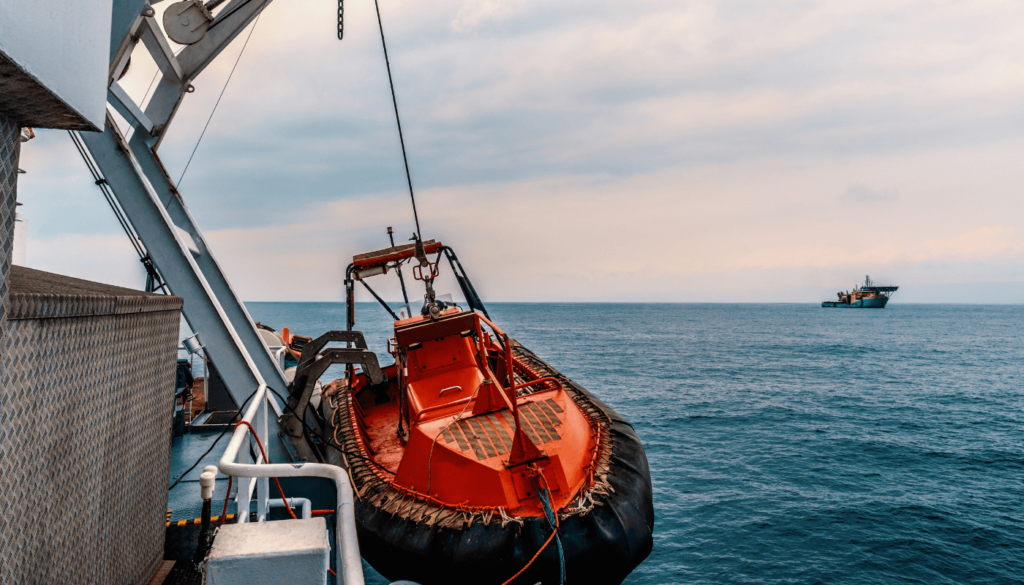
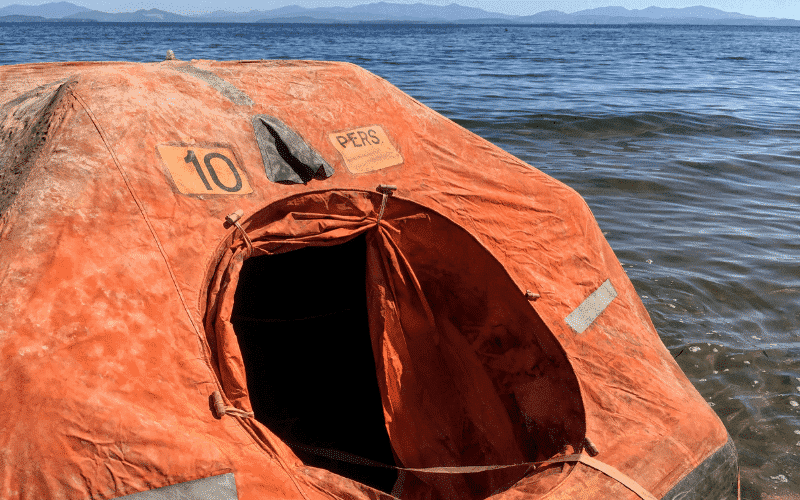
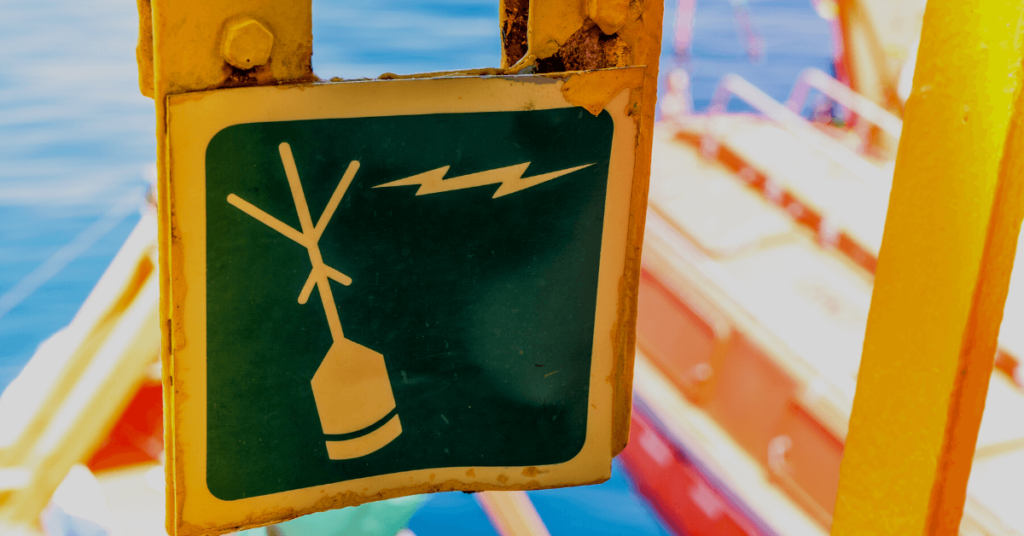
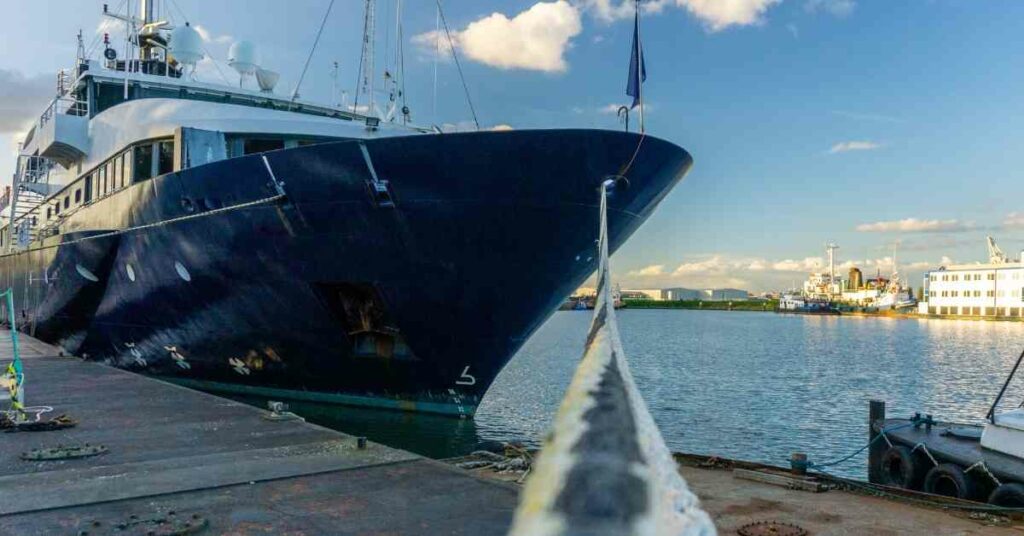
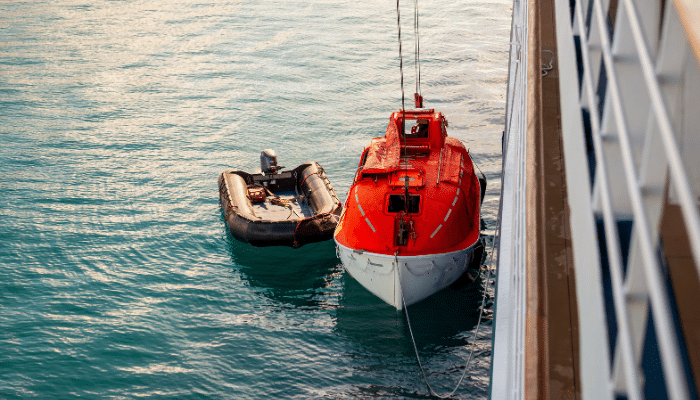
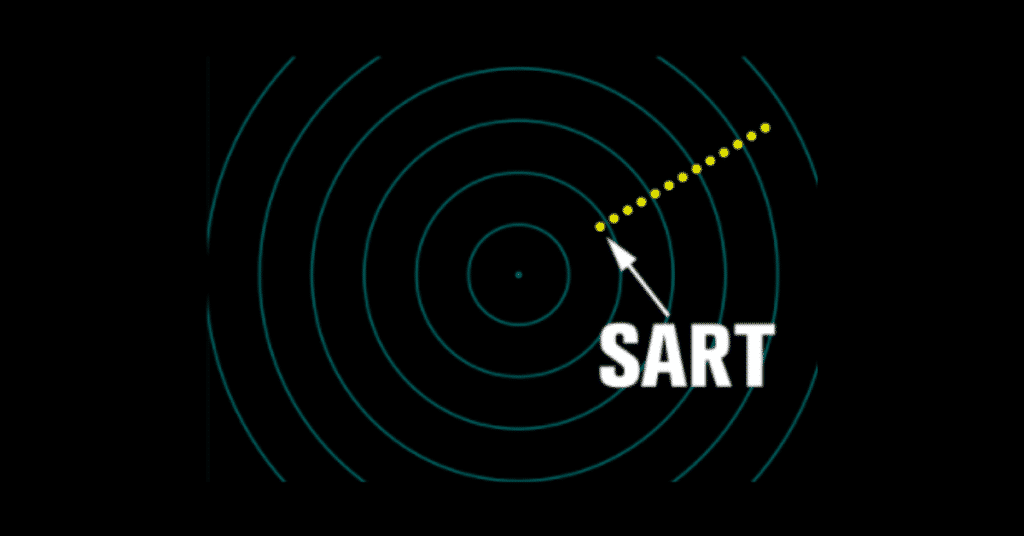

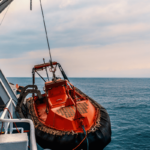
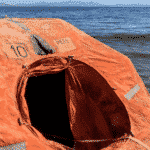
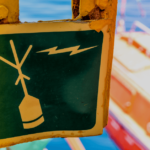
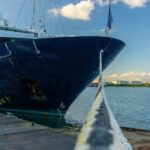
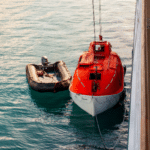
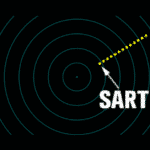
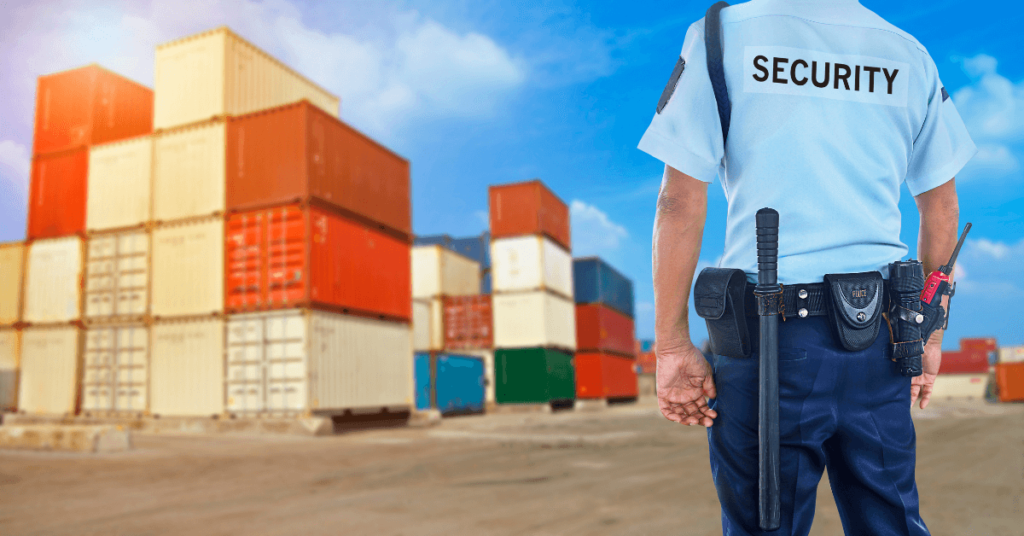
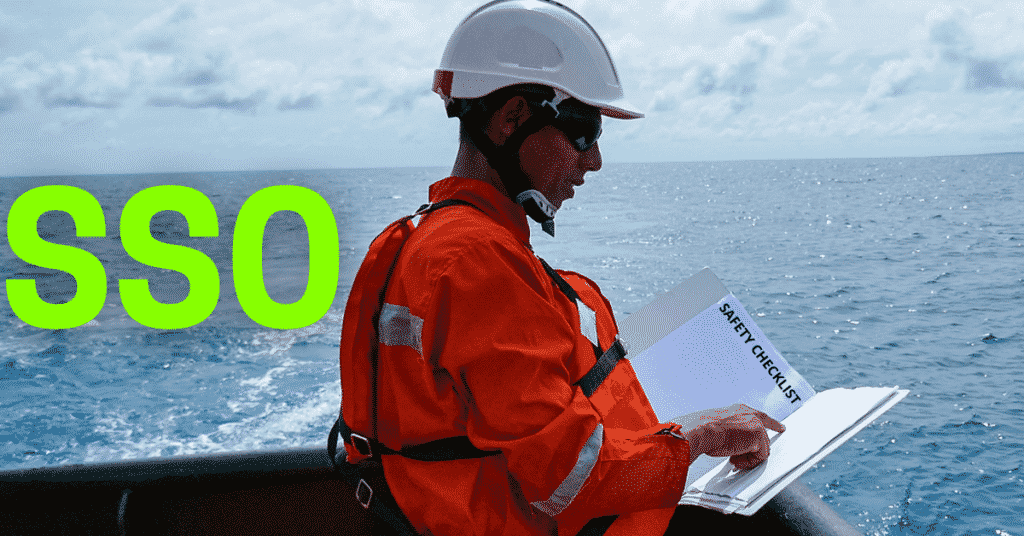
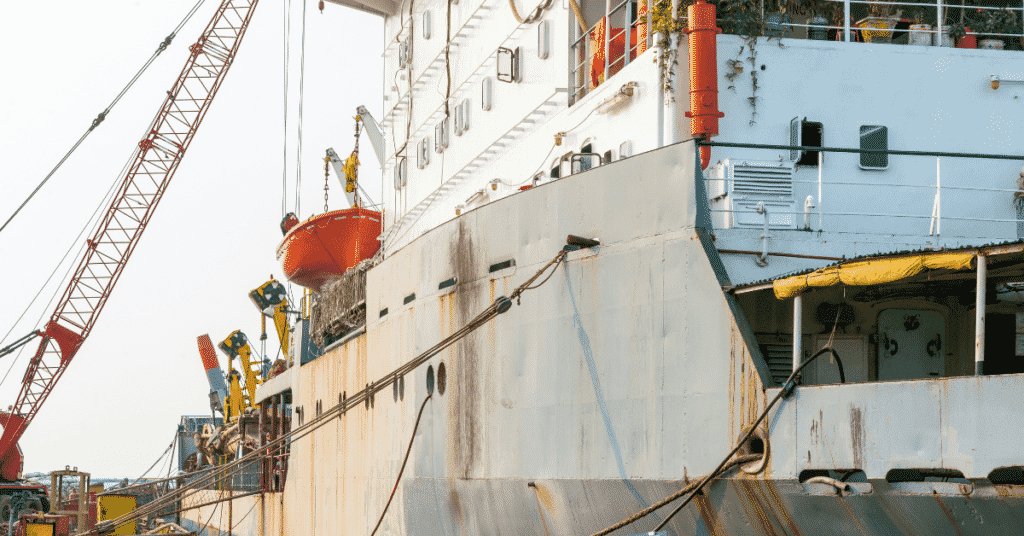
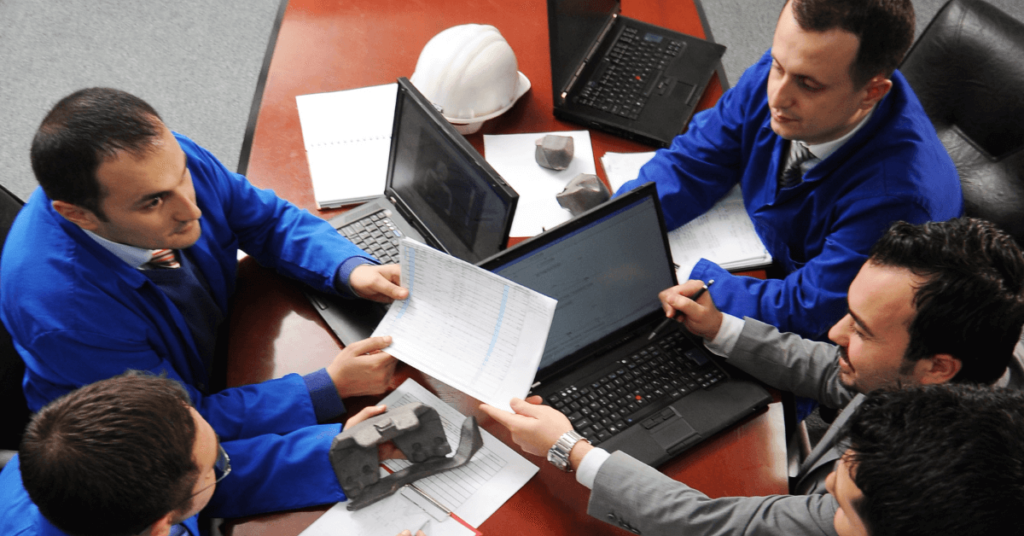
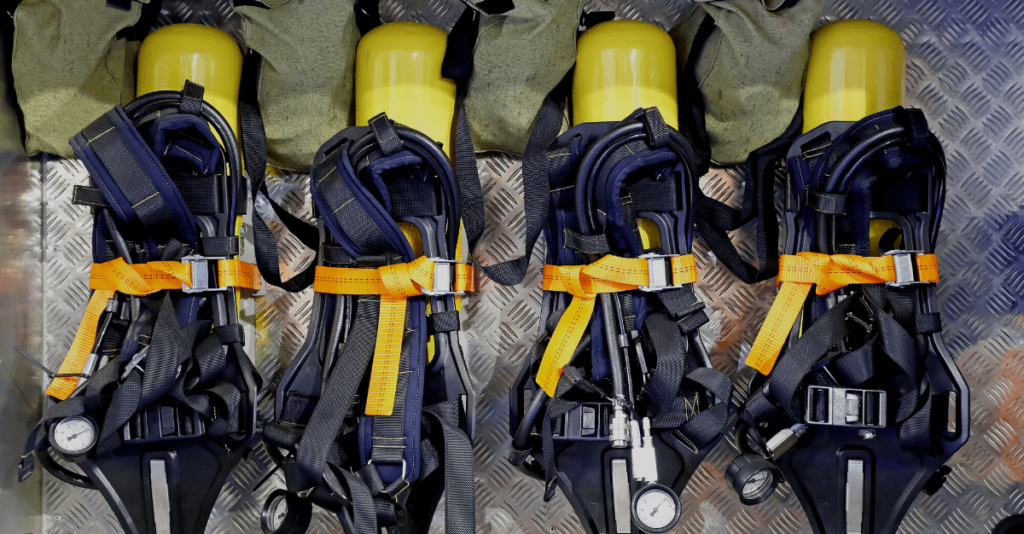
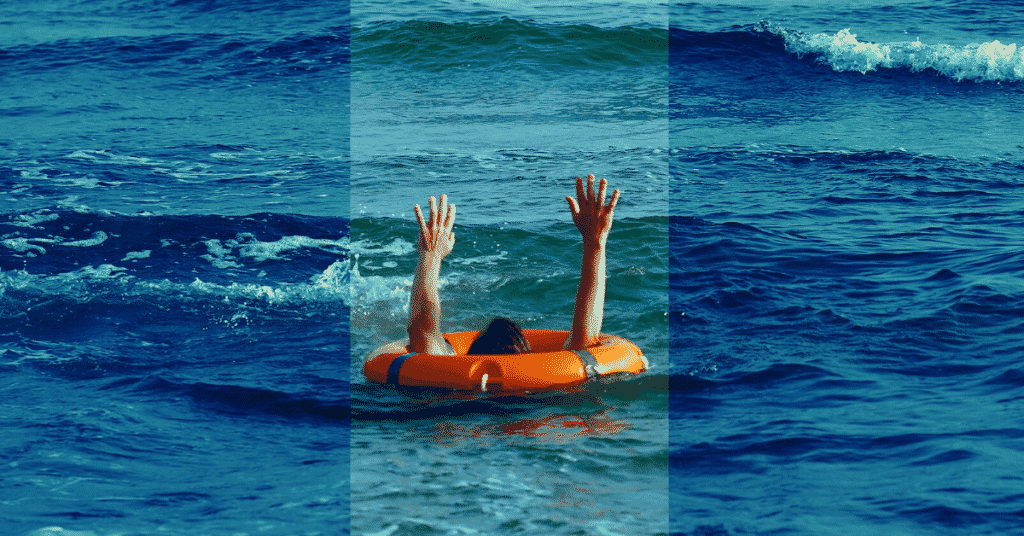
Good day,
My name is Maral I represent (ship supply/construction) company Ural Caspian Service LLP based in Aktau, Kazakhstan
Dear All,
Could you please consider the below and provide your offers asap?
Description Qty Required Comments
Self Contained Breathing Apparatus – 22 min Duration (SCBA – 22 min) complete including vest, hoses, mask, regulator, etc.. 416 Solas-MED Approved
Self Contained Breathing Apparatus – 45 min Duration (SCBA – 45min) complete including vest, hoses, mask, regulator, etc.. 65 Solas-MED Approved
Breathing air compressor for Filling SCBAs 1 With all accessories required for Filling offered SCBAs
Air compressor:
– Mobile. See Mariner 320-E as an example.
– Electric Motor, 400V, 50 Hz
– Charging rate 320 Lt/min or similar rate
Note: The offer must show specs, approval / origin and availability separately.
We are interested for only Buying option at the moment.
Thank you in advance!